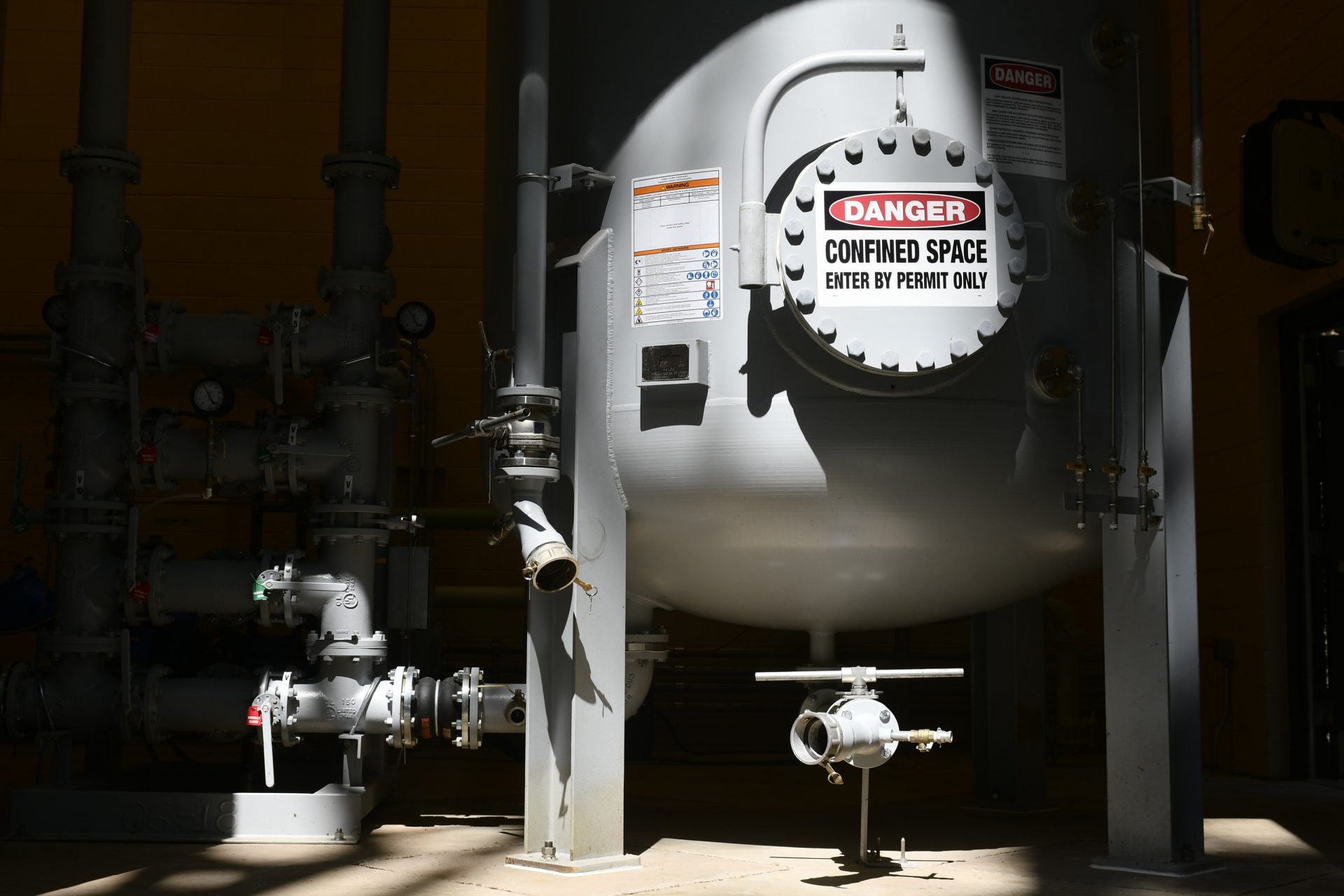
FILE PHOTO: The Horsham Air Guard Station in Bucks County, Pa.
Jon Hurdle / StateImpact Pennsylvania


FILE PHOTO: The Horsham Air Guard Station in Bucks County, Pa.
Jon Hurdle / StateImpact Pennsylvania

Jon Hurdle / StateImpact Pennsylvania
FILE PHOTO: The Horsham Air Guard Station in Bucks County, Pa.
Plans to investigate links between health and the toxic PFAS family of chemicals at a cluster of sites in Bucks and Montgomery counties took another step forward Thursday when officials described how they will look for evidence that the chemicals may cause cancer and some other serious health conditions.
Starting next year, the project aims to look for signs of illness in the blood of 1,000 adults and 300 children in and around Horsham, Warrington and Warminster townships where public and private water wells have been tainted with the chemicals because of decades of their use at two local military bases.
The work is part of a national investigation into the relationship between health outcomes and the man-made chemicals that are formally known as per- and poly-fluoroalkyl substances. They have been used in a range of consumer products since the 1940s, and are already linked with a range of serious conditions, including some cancers, decreased vaccine response in children, elevated cholesterol, and high blood pressure in pregnant women.
The Pennsylvania townships are among eight sites nationally where the Centers for Disease Control and Prevention and the Agency for Toxic Substances and Disease Registry will be seeking a total of 7,000 adults and 2,100 children to volunteer to have their blood drawn.
The federal government does not regulate the chemicals, but rising concern about their health effects over the last decade has prompted some states, including New Jersey, to set their own health limits on drinking water concentrations for some of the chemicals.
Pennsylvania has begun investigating whether to set limits on two of the most common PFAS chemicals, but for now follows the U.S. Environmental Protection Agency’s non-enforceable health advisory limit of 70 parts per trillion in drinking water for PFOS and PFOA, two of the most common types of PFAS chemicals. Many scientists say the EPA level is too high to sufficiently protect public health, a view that’s endorsed by many state standards that are far lower.
At Thursday’s public meeting, held online because of the COVID-19 pandemic, Dr. Resa Jones, a researcher from Temple University, said part of the project will look at the chemicals’ links with certain cancers, and examine the “psychosocial” effects on a population that lives in an area of known contamination.
The study will be based on the findings of a series of focus-group meetings with people in the two counties whose water comes from both municipal and private wells. The meetings were stopped during the spring because of the pandemic, but aim to continue online, Jones said.
Participants have expressed fear because of drinking from public or private water sources for many years. “They fear every time they go to the doctor that they will find out that they have cancer,” she said.
The three focus groups that have taken place so far have produced hundreds of pages of comments from people who express anxiety about not knowing whether they will get cancer after drinking the water, she said.
“It’s the lack of information for people. They just don’t know, and I think it’s because the health studies have been not been done, so therefore anyone within a 25-mile radius of either of these bases wonders, ‘Is my cancer due to this?’” one participant said, in a quote read by Jones to the meeting.

Bastiaan Slabbers / For WHYY
Detailed view on the newly installed system to filter out PFAS Forever Chemicals at Well #2 of the Horsham Water and Sewer Authority facility in Horsham, Pa., on August 22, 2019.
Public water systems in the three townships are now effectively free of PFAS following the installation of filters that remove the chemicals, said Hope Grosse, co-founder of the Buxmont Coalition for Safer Water, a community group that has been pressing for strict PFAS controls for about five years.
But some private wells are still contaminated with the chemicals. Some of their owners are using bottled water while waiting to be connected to public systems, while others with contaminated wells are still rejecting public water because they don’t want to pay a water bill, Grosse said in an interview before the meeting.
“The good news is that the public water supply to these initially affected areas is now safe at very low levels of PFAS,” she said. “More of the wells are up and running again but not all of them, so there is some supplemental water coming in.”
By Dec. 1, 523 private wells had been sampled for PFOA and PFOS, of which 102 were found to contain the chemicals at above the EPA’s health advisory limit, according to the Navy, which is running a PFAS remediation program at the National Air Station Joint Reserve Base Willow Grove, one of the sites where PFAS chemicals were used in firefighting foam.
Tests on the base found levels of PFOA and PFOS that vastly exceeded the EPA health limit, the Navy said in a separate presentation on Wednesday evening. It reported concentrations of up to 55,300 parts per trillion of the chemicals, or 790 times the EPA’s advisory level.
In an effort to prevent an underground plume of contaminated water spreading beyond the base, the Navy is investigating the feasibility of creating a barrier of carbon particles suspended in water along the base’s property line.
The apparent effects of PFAS on the local community were shown by a case in which a 3-year-old girl was diagnosed with stage 5 kidney cancer, said her mother, Renee Frugoli, in a video that concluded Thursday’s meeting.
The cancer was found on both kidneys and on her lungs and liver, Frugoli said. “I needed answers. How could this happen to my innocent little 3-year-old baby, barely able to walk and talk and care of herself, who is now full with tumors?”
Frugoli, who grew up drinking water from a private well about a mile from the Horsham base, said she was devastated to find in 2014 that her home’s water was contaminated with PFAS, and that the chemical was connected to kidney cancer.
“I was devastated to think that I, as Felicia’s mother, who was supposed to be protecting her, had caused her this cancer as I was pregnant or as I was serving her formula mixed with the tap drinking water,” she said.
Frugoli urged residents to participate in the health study so that more can be known about links between the chemicals and illness. “This is an opportunity for us to help the scientists to understand more about PFAS, and it can’t be done without the community,” she said.
StateImpact Pennsylvania is a collaboration among WITF, WHYY, and the Allegheny Front. Reporters Reid Frazier, Rachel McDevitt and Susan Phillips cover the commonwealth’s energy economy. Read their reports on this site, and hear them on public radio stations across Pennsylvania.
(listed by story count)
StateImpact Pennsylvania is a collaboration among WITF, WHYY, and the Allegheny Front. Reporters Reid Frazier, Rachel McDevitt and Susan Phillips cover the commonwealth’s energy economy. Read their reports on this site, and hear them on public radio stations across Pennsylvania.
Climate Solutions, a collaboration of news organizations, educational institutions and a theater company, uses engagement, education and storytelling to help central Pennsylvanians toward climate change literacy, resilience and adaptation. Our work will amplify how people are finding solutions to the challenges presented by a warming world.